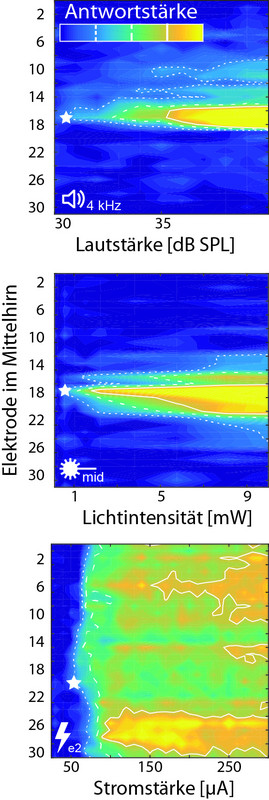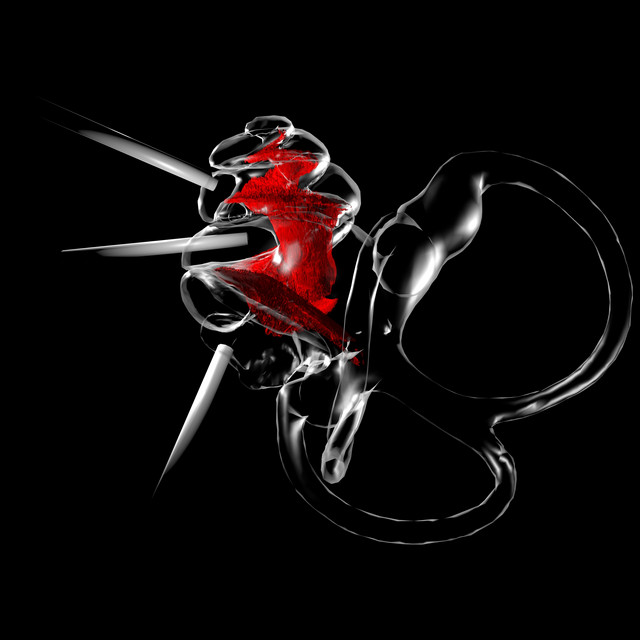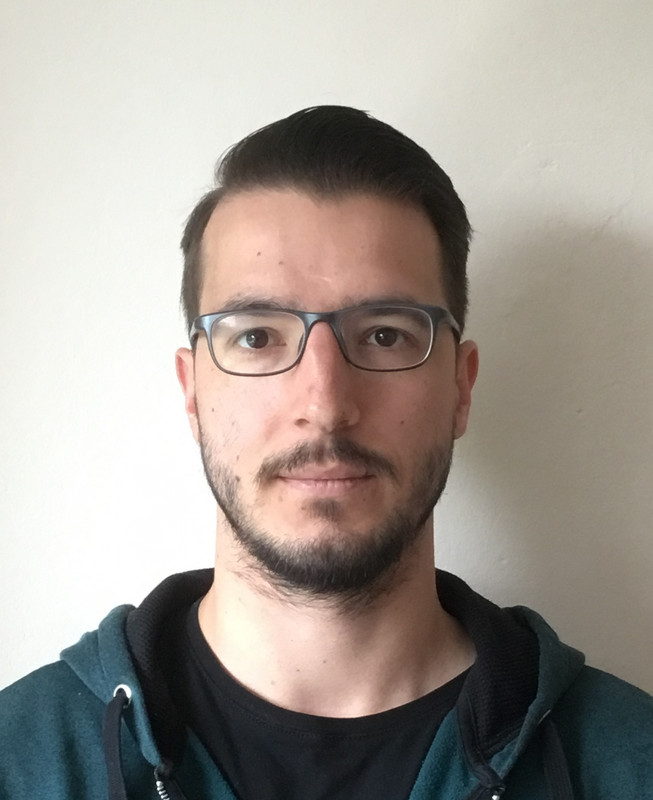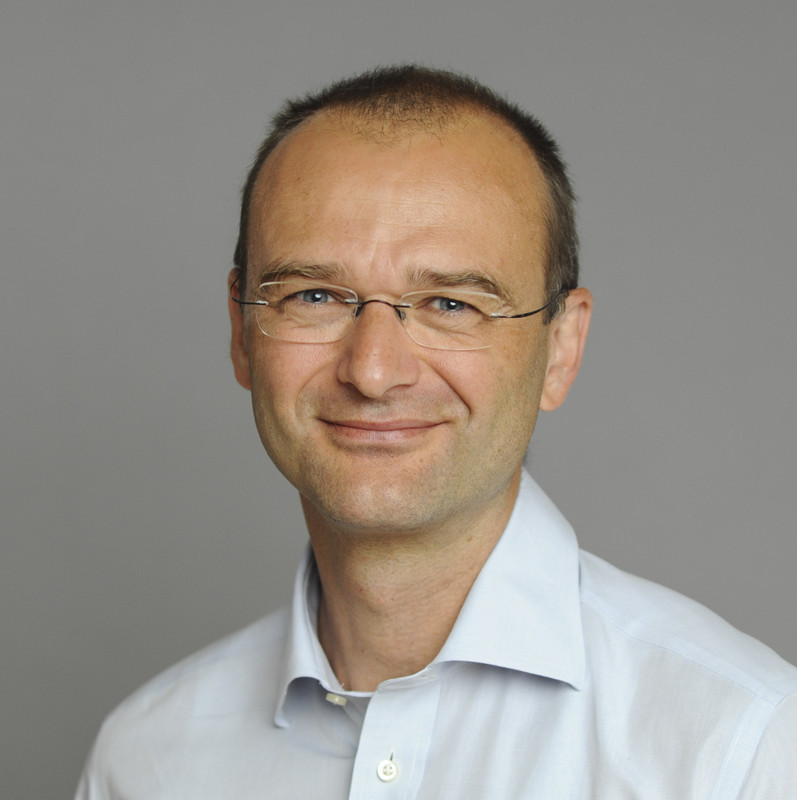How artificial hearing could become more natural with the help of light

Enjoying music, recognizing melodies or making conversation in an environment with background noise – these abilities are still severely impaired in people who depend on hearing prostheses, so-called cochlear implants. Researchers in Göttingen were now able to show that artificial hearing can be improved by stimulating the hearing pathway by light instead of the routinely applied technique using electricity.
The research was conducted by a group of scientists led by Tobias Moser, who is Director of the Auditory Neuroscience Department at the University Medical Center Göttingen (UMG) and head of the Auditory Neuroscience and Optogenetics Laboratory at the German Primate Center (DPZ). They compared the stimulation of the auditory nerve using light (optogenetic stimulation) in a technique that was developed in Göttingen, with natural hearing and stimulation by an electrical cochlea implant in an animal model. By studying nervous excitation in the midbrain, the scientists obtained comparable data on the resolution of pitch (frequency) in acoustic, optical and electrical stimulation treatments. The results of the comparison between the auditory resolution of tone pitches in the different treatments was recently published.
In their study, the scientists of the Göttingen Campus conclude that the artificial excitation of the auditory pathway using light permits for a far higher resolution than the established technique using electricity. At low excitation intensities, the resolution capacity delivered by optogenetic stimulation was even comparable to the natural hearing capacity. These results give hope that future cochlear implants may better restore the hearing capacity of deaf patients and those hard of hearing. The preclinical research was supported by the „OptoHear“ project of the European Research Council (ERC). The results were published in the journal Nature Communications.
Original publication
Dieter A, Duque-Afonso CJ, Rankovic V, Jeschke M, Moser T (2019): Near physiological spectral selectivity of cochlear optogenetics. Nature Communications, doi: 10.1038/s41467-019-09980-7.




